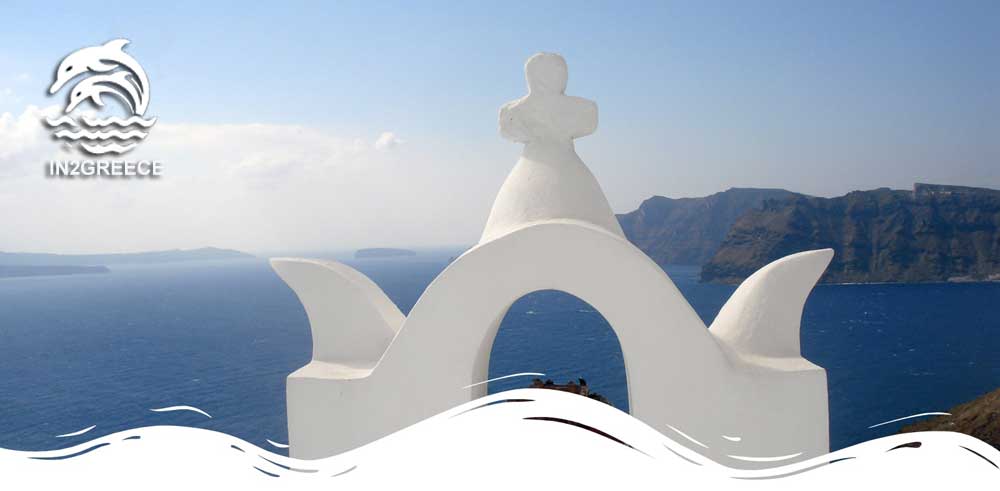What are the most important Archaeological sites in Greece
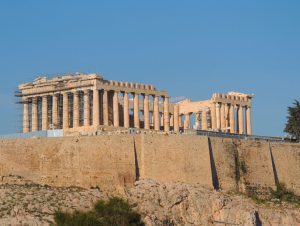
The Acropolis of Athens is one of the most recognizable and iconic landmarks in Greece. This ancient citadel, located atop a rocky hill overlooking Athens, was once the center of political and cultural life in ancient Greece. The most famous structure within the Acropolis is undoubtedly the Parthenon – a magnificent temple dedicated to Athena, goddess of wisdom and war.
Another must-see historical site in Greece is the Temple of Apollo at Delphi. Located on Mount Parnassus, this sacred sanctuary was considered by many ancient Greeks to be the center of the world. It was here that people would come to seek advice from Pythia (the priestess), who they believed could communicate with Apollo himself.
The Sanctuary of Olympia is another significant historical site worth visiting. It’s where athletes from all over Greece would gather every four years for the Olympic Games – an event that has come to symbolize international cooperation and peaceful competition.
For those interested in theater history, make sure you visit The Theatre of Dionysus situated below Acropolis Hill – it’s among oldest open-air theaters globally!
Other noteworthy sites include Ancient Corinth that played an important role as a commercial hub at its time; Ancient Mycenae which boasts impressive ruins dating back to 1600 BCE; Meteora which features breathtaking monasteries perched atop towering cliffs; Royal tombs of Vergina containing artifacts belonging to royalty during Alexander’s reign; Asclepion on Kos Island known for healing science and rituals since Hellenic times; Ancient Lindos with unique architecture influenced by Byzantine & Ottoman cultures plus stunning beaches around Rhodes Island or Epidaurus with fascinating acoustics design still marveling visitors today!
The Acropolis of Athens
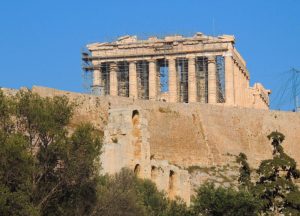
The most famous building on the Acropolis is undoubtedly the Parthenon, a stunning temple dedicated to Athena Parthenos, the goddess of wisdom and war. Built in 438 BC, it boasts impressive architectural features such as Doric columns and intricate friezes depicting important events from Greek mythology.
In addition to the Parthenon, visitors can also explore other notable structures such as the Temple of Athena Nike and the Erechtheion. These buildings showcase different styles of architecture that were popular during different periods in Ancient Greece.
Walking around this site will transport you back to an era where gods and goddesses ruled supreme over mere mortals. The beauty and grandeur found in every corner are truly awe-inspiring, making it easy to see why so many people flock here every year.
Visiting The Acropolis is like taking a step into another world – one that has left an indelible mark on history thanks to its enduring legacy.
The Parthenon
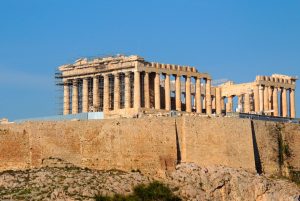
Despite being damaged by war, weather, and time, the Parthenon remains a remarkable example of ancient Greek architecture. Its proportions are based on mathematical principles that reflect the Greeks’ quest for harmony between man-made structures and nature.
Visitors can see fragments of the original building as well as replicas of its sculptures at nearby museums. One notable feature is the frieze depicting scenes from Athenian life, including religious processions and athletic contests.
The restoration work currently underway aims to preserve this cultural treasure for future generations. While there have been debates about how best to restore it without erasing its history or identity, one thing remains clear: The Parthenon continues to inspire awe in all who visit it.
The Theatre of Dionysus
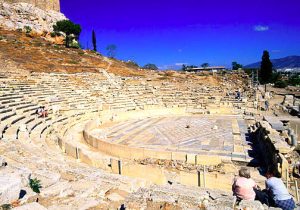
The theatre had a seating capacity of around 17,000 people, making it one of the largest theatres in ancient Greece. It was also home to many famous plays by well-known writers such as Sophocles and Euripides.
Today, visitors can still see remnants of the original structure including some of the stone seating. The stage area has been reconstructed so that modern-day performances can be held there during summer months.
Visiting this historical site gives you an insight into ancient Greek culture and their love for drama and storytelling through theatrical performances.
The Temple of Apollo at Delphi
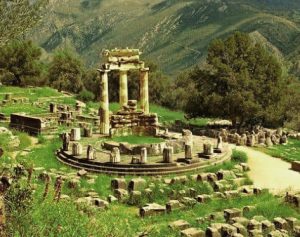
The temple complex includes several buildings such as a treasury, an amphitheater, and a stadium where athletic games were held during festivals. However, the main attraction is undoubtedly the temple itself with its imposing columns and intricate design.
One of the most interesting features of this temple is that it served as an oracle for centuries. People from all over Greece would come seeking advice on important matters ranging from love affairs to wars. The oracle was believed to be delivered by Pythia who sat inside a small chamber within the temple.
Today visitors can still see impressive ruins at Delphi including parts of the temple structure which have survived through centuries despite earthquakes and invasions.
Visiting The Temple of Apollo at Delphi provides an invaluable insight into Ancient Greek culture while also allowing you to appreciate its architectural marvels up close!
The Sanctuary of Olympia
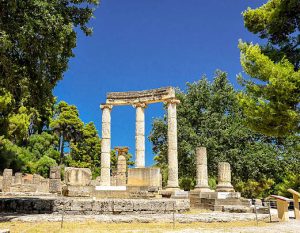
The sanctuary was established around 776 BC and became famous for hosting the Olympic Games every four years. It was not only a religious center but also an athletic complex where athletes from all over Greece competed against each other.
Visitors can explore various ruins within the sanctuary, including temples, altars, and workshops. The Temple of Zeus housed one of the seven wonders of the ancient world – a giant statue made by Phidias that depicted Zeus sitting on his throne.
Another highlight is the Stadium where foot races were held during ancient times. Walking down this track gives visitors an amazing sense of history as they imagine spectators cheering on their favorite athletes.
Visiting The Sanctuary of Olympia offers a unique opportunity to step back into ancient Greek times and appreciate their rich cultural heritage.
Knossos palace in Crete
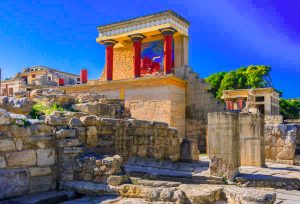
The palace complex of Knossos was first built around 1900 BCE, but it was destroyed by an earthquake shortly afterward. It was then rebuilt and expanded, reaching its peak around 1700 BCE. The palace was a multi-story structure with numerous rooms, corridors, and courtyards. It was adorned with elaborate frescoes, sculptures, and other artworks, showcasing the artistic and architectural achievements of the Minoans.
The Minoan civilization, which thrived from approximately 2700 BCE to 1450 BCE, was highly advanced for its time. They were known for their sophisticated palace complexes, vibrant frescoes, extensive trade networks, and development of a unique writing system called Linear A (which has not been deciphered yet).
The palace at Knossos was rediscovered in the late 19th century by the British archaeologist Sir Arthur Evans. He conducted extensive excavations at the site, uncovering the remains of the palace complex and revealing many insights into Minoan culture and society.
Today, the Knossos Palace is a popular tourist attraction, drawing visitors from around the world. Although the site has been partially reconstructed to give visitors a sense of its original grandeur, it remains a complex archaeological site with ongoing research and excavation work. Exploring Knossos offers a glimpse into the fascinating history of the Minoan civilization and its contributions to ancient Greek culture.
Ancient Corinth
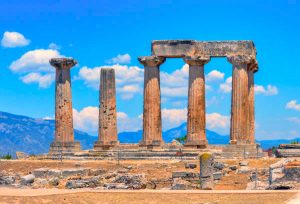
At Ancient Corinth, visitors can explore many ruins that date back to ancient times. One of the main attractions is the Temple of Apollo, which was built in 540 BC and destroyed by earthquake in 373 BC. Another popular site is the Peirene Fountain, which served as a major water source for the city.
In addition to these landmarks, there are also many other fascinating ruins to discover at Ancient Corinth. Visitors can walk through old marketplaces and see remnants of public buildings like baths and government offices.
Ancient Corinth has been painstakingly excavated over time so that visitors today can get an idea of what life must have been like during this period. It’s easy to imagine merchants haggling over goods or politicians debating policy when walking through these well-preserved ruins.
Ancient Corinth offers a unique glimpse into Greece’s rich history that should not be missed by any traveler interested in historical sites.
Ancient Delos
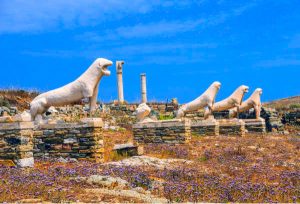
The island has a rich history and is filled with magnificent ruins that are well-preserved to this day. Visitors can explore various temples dedicated to different gods, including Apollo, Artemis and Dionysus. The Terrace of the Lions is another popular attraction that features nine marble lion statues guarding the Sacred Lake.
One highlight of Ancient Delos is its impressive amphitheatre which could seat up to 5,500 people. Here visitors can imagine what it would have been like watching plays or attending events during ancient Greek times.
Aside from its historical significance, Ancient Delos also boasts stunning natural beauty. Its crystal-clear waters make for an ideal spot for swimming or sunbathing on secluded beaches.
Visiting Ancient Delos provides an insightful glimpse into life during ancient Greek civilization while surrounded by picturesque scenery making it one of Greece’s must-visit historical sites
Temple of Poseidon
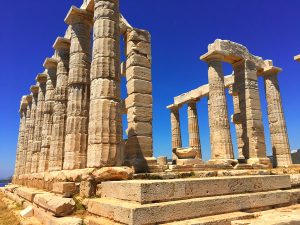
The temple was dedicated to Poseidon, the Greek god of the sea, earthquakes, and horses. It was constructed during the 5th century BCE and is considered one of the best-preserved ancient Greek temples in the country. The temple was built to honor Poseidon and to serve as a beacon for sailors, as Sounion was an important navigational point.
The Temple of Poseidon at Sounion was designed in the Doric architectural style, characterized by its sturdy columns and simple, geometric design. Originally, it had 34 columns, with 15 on each side and 6 on the front and back. Today, only 16 columns remain standing, but they still provide a magnificent sight.
The temple’s location offers breathtaking panoramic views of the surrounding sea and coastline, making it a popular tourist destination. Visitors can explore the ruins of the temple and enjoy the scenic beauty of the area. The sunset at Sounion is particularly renowned, and many people visit to witness the temple’s silhouette against the golden hues of the setting sun.
To reach the Temple of Poseidon at Sounion, you can take a bus or drive from Athens, which is the closest major city. The journey takes approximately 1-2 hours, depending on the mode of transportation and traffic conditions.
Visiting the Temple of Poseidon at Sounion provides an opportunity to immerse oneself in ancient Greek history, admire the architectural splendor, and experience the natural beauty of the Aegean coastline.
Ancient Mycenae
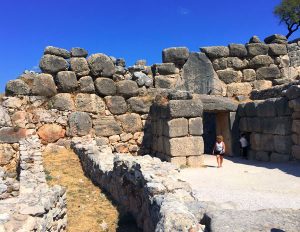
One of the most iconic landmarks in Ancient Mycenae is the Lion Gate, an impressive entranceway with two stone lions perched atop its pillars. The palace complex inside contains several courtyards, halls, and rooms where artifacts such as pottery and jewelry were discovered.
Another highlight of Ancient Mycenae is the Treasury of Atreus, also known as the Tomb of Agamemnon. This impressive structure consists of a circular burial chamber with a massive dome made entirely out of stone blocks.
Visitors can also explore other areas within Ancient Mycenae such as its fortification walls, underground cisterns for water storage, and tholos tombs which are beehive-shaped structures used for burials.
Visiting Ancient Mycenae offers a glimpse into an important period in Greek history and provides insights into how this fascinating culture lived their lives over 3 millennia ago.
Royal tombs of Vergina
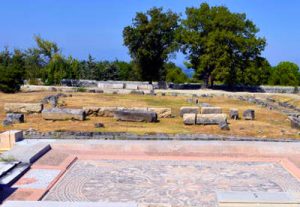
The most impressive tomb is Tomb II, which contains the remains of King Philip II, father of Alexander the Great. The intricate paintings on the walls depict scenes from Greek mythology and hunting scenes that showcase the royal family’s power.
Tomb III also provides valuable insight into ancient Macedonian burial practices with its elaborate gold wreaths and jewelry. It is believed to be the tomb of Alexander IV, son of Alexander the Great.
Excavations continue at Vergina today as scientists hope to uncover more information about this fascinating chapter in history. Visitors can explore this site and learn more about ancient Macedonian culture firsthand by viewing artifacts such as weapons, pottery and jewelry found within these tombs.
Meteora
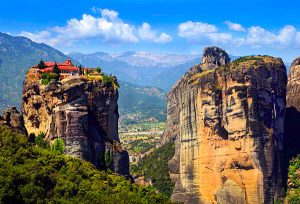
To reach these monasteries, visitors must climb steep staircases carved into the rocks themselves. The journey up can be challenging but is well worth it for the breathtaking views of both nature and ancient architecture. Inside each monastery, you’ll find fascinating artifacts such as religious icons and manuscripts dating back centuries.
Aside from its rich history and spiritual significance, Meteora also offers a great opportunity for outdoor enthusiasts with hiking trails winding through the surrounding valleys and hillsides. Whether you’re interested in history or just want to take in some incredible natural scenery, Meteora should definitely be on your list of places to visit when traveling in Greece!
Asclepion of Kos
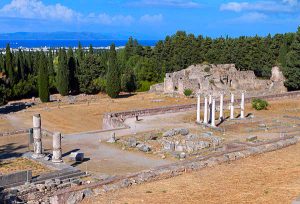
The site is known for its well-preserved ruins, including a large temple complex and an impressive amphitheater. Visitors can explore the various buildings that once housed sick patients seeking treatment from skilled doctors and physicians.
One interesting feature at Asclepion of Kos is the underground passage known as “the tunnel”. This passageway was used by patients seeking a cure for their ailments. Legend has it that those who successfully made it through the winding tunnel would be cured by divine intervention.
Another notable attraction at Asclepion of Kos is the sacred spring where visitors can see where holy water was collected for medicinal purposes.
Visiting Asclepion of Kos offers a unique glimpse into Ancient Greek healthcare practices and spiritual beliefs surrounding health and wellness. It’s definitely worth adding to your list when exploring famous historical sites in Greece!
Ancient Lindos in Rhodes Greece
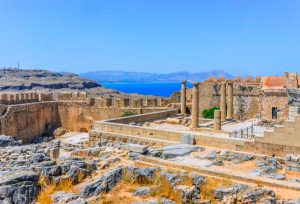
The highlight of this site is undoubtedly its acropolis, which sits atop a steep hill overlooking the Aegean Sea. Visitors can explore ruins such as the Temple of Athena Lindia and an amphitheater that could seat up to 1,800 people.
One unique feature of Ancient Lindos is its narrow streets lined with white houses that make it feel like a traditional Greek village. You’ll also find charming little shops selling souvenirs and handmade goods.
Perhaps most fascinating about Ancient Lindos is how well-preserved it remains despite being thousands of years old. While some structures have been damaged over time, much of what you see today has stood for centuries – a testament to the ingenuity and skill of ancient architects.
If you’re looking for an amazing historical experience in Greece, be sure to include Ancient Lindos on your itinerary!
The palace of Phaestos in Crete
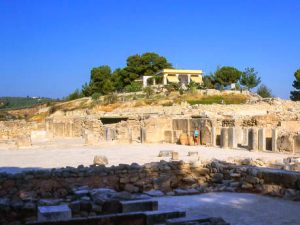
The archaeological site of Phaestos is situated on a hilltop overlooking the Messara Plain in southern Crete. The palace complex, believed to have been constructed around 2000 BCE, covers a considerable area and contains multiple structures, courtyards, and storerooms. The architecture and design of Phaestos reflect the advanced engineering skills and cultural sophistication of the Minoans.
One of the most notable discoveries at Phaestos is the Phaestos Disc, a unique artifact found in 1908. The disc, made of clay and inscribed with a series of pictographs, remains undeciphered to this day. It is a significant archaeological mystery and has sparked much speculation and debate among researchers.
The Minoan civilization, represented by sites like Phaestos, played a crucial role in the development of ancient Greece. They were known for their advanced agricultural practices, maritime trade, art, and architecture. However, the decline of the Minoans around 1100 BCE is still a subject of debate, with theories ranging from natural disasters to invasion by Mycenaean Greeks.
Today, Phaestos is an important archaeological site open to visitors. Exploring the ruins offers insights into the daily life, religious practices, and technological achievements of the Minoans. The site provides a glimpse into the fascinating history of Crete and its significant role in the ancient world.
Ancient Epidaurus
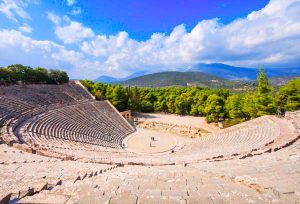
The highlight of Ancient Epidaurus is its theater, which has exceptional acoustics that are still a mystery to modern scientists. Visitors can sit in the stands and hear whispers from performers on stage with perfect clarity.
In addition to the theater, there are several other structures worth exploring at Ancient Epidaurus. These include temples dedicated to Asclepius (the god of medicine) and Artemis (the goddess of hunting), as well as an underground tunnel system used for purification rituals.
Today, visitors can explore this incredible historical site by walking through its ruins and learning about its fascinating history through informational plaques located throughout the area. Whether you’re interested in ancient Greek religion or simply enjoy exploring architecture from centuries past, Ancient Epidaurus is not to be missed when visiting Greece’s most famous historical sites.
The Necromanteion of Ephyra
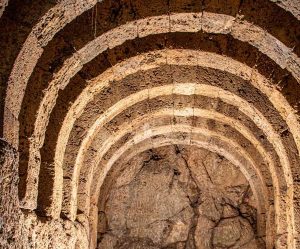
Mythology intertwined with reality as seekers journeyed seeking guidance from departed souls. It is said that Orpheus and Heracles sought counsel within its walls. The echoes of their quest still linger amidst the ruins.
The history behind this enigmatic site reveals a blend of religious practices and spiritual beliefs unique to that era. Priests conducted rituals invoking the deceased while visitors awaited messages from beyond.
As shadows danced along ancient corridors, mysteries unfolded within its chambers revealing glimpses into a world unseen yet deeply felt by those who dared to seek answers from realms unknown.
The Lion Gate at Mycenae
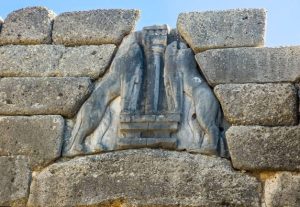
Whether you are a history enthusiast, an architecture buff, or simply someone seeking to immerse yourself in ancient legends, a visit to the Lion Gate at Mycenae is sure to leave you in awe. Standing before this ancient marvel, you can’t help but feel humbled by the ingenuity and craftsmanship of those who came before us.
So next time you find yourself in Greece, make sure to venture off the beaten path and experience firsthand the enduring legacy of the Lion Gate at Mycenae. It’s not just a gate; it’s a portal to another time—a reminder of our shared human history and an inspiration for generations to come.
The Temple of Apollo Epicurius
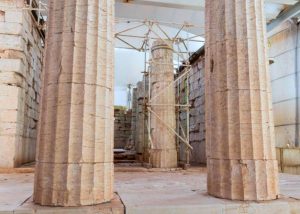
Its isolated location, near the town of Figaleia in Arcadia, adds to the mystique and allure of the site, which was recognized by UNESCO as a World Heritage Site in 1986 for its outstanding historical and architectural significance.
The Temple of Apollo Epicurius is renowned for its architectural innovations and the blending of different stylistic elements. It is one of the earliest known examples to use the Corinthian order on the exterior, alongside more traditional Doric and Ionic orders, showcasing an experimental approach to classical architecture that was ahead of its time.
